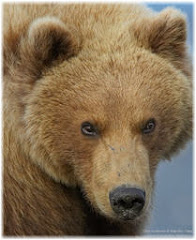Sand dollars
1. Sand dollars live in…you guessed it! The sand. Typically, the
species
Dendraster excentricus is found close to shore
in the low intertidal zone to as deep as 30 feet from Alaska to
Baja California. (The low intertidal zone is the area close to
shore that is usually covered with water except at very low
tides.)
2. For sand dollars, living right next to each other in very
large groups or beds is the way to go. Sometimes there are
neighborhoods of sand dollars that are several square feet
(suburban dwelling) and others stretch for miles across the sandy
ocean floor (urban dwelling).
3.There are many species of sand dollars living around the world
with a variety of common names including sea cookie and sand cake.
Sand dollars also come in a variety of colors such as green, blue
or black; the local California species,
Dendraster
excentricus, is purple.
4. Sand dollars are members of the phylum
Echinodermata,
which means they are echinoderms and closely related to sea stars,
sea urchins and sea cucumbers.
5. It’s hard to believe, but this flat and round-shaped creature
is designed for burrowing in the sand. Their bodies are covered
with tiny spines (similar to a sea urchin’s spines but super
small) that they use to dig. Once they’ve burrowed into a good
position sand dollars keep their butt end above
the sand’s surface to capture food.
6. The feeding strategy of sand dollars is fascinating. Their
bodies are covered with tiny appendages to capture food particles
small and large. Tiny cilia (extra small hairs) on the sand
dollar’s spines sweep up small bits of food and tiny tube feet
adeptly collect larger food pieces. Once food is caught the tiny
appendages on the sand dollar work together to sweep food towards
the mouth, which is located at the center of the five-petal flower
pattern on bottom. The mouth has a five-toothed set-up called
Aristotle’s lantern for chomping food. (Five pattern symmetry is a
characteristic of echinoderms, sea stars have five arms, etc.)
7. Sand dollars reproduce by spawning; male sand dollars release
sperm and female sand dollars release eggs into the water during
spring. Reproduction is assisted by sand dollars living so close
together. Sand dollars begin their lives as larvae
and go through several larval stages before developing skeletons
and settling on the ocean floor as the first step to adulthood. An
adult sand dollar is about three inches in diameter and lives
approximately eight years.
.jpg)





